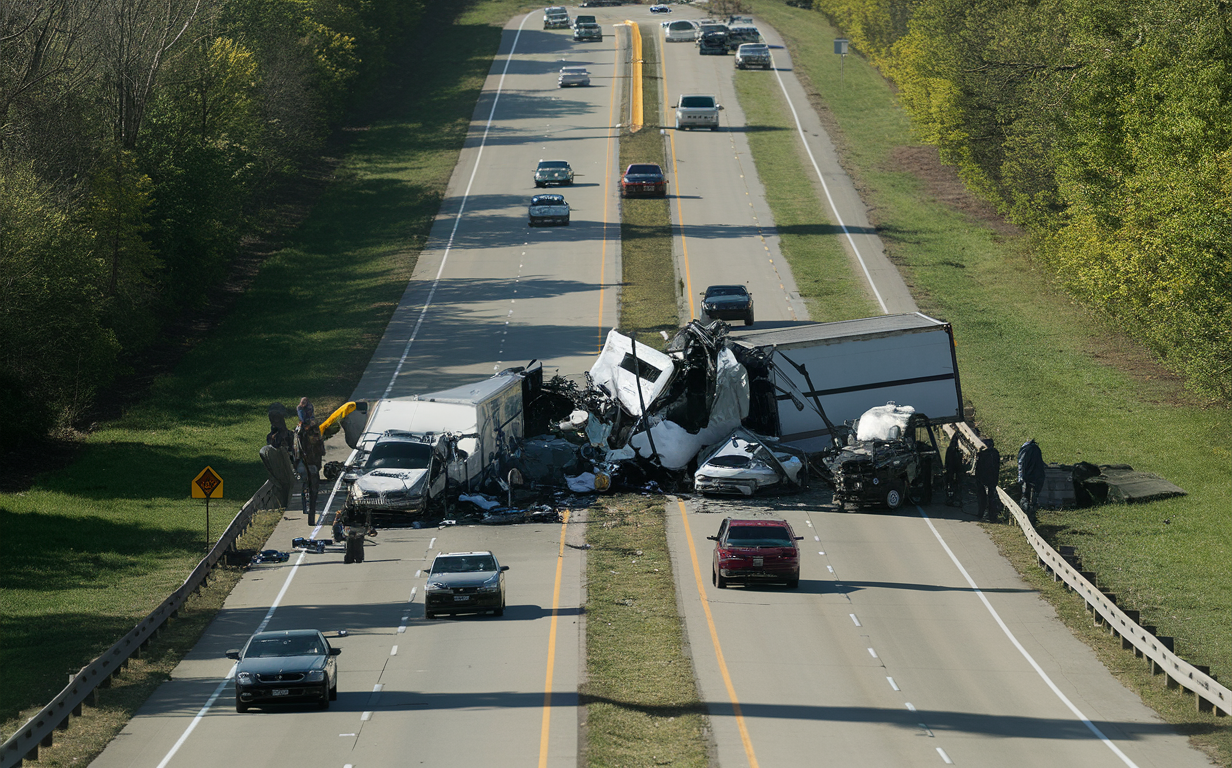MI Trust Administration by the Successor Trustee Attorneys
 The most common revocable living trust is one established by a couple that continues until both have died. Thereafter, one of their children becomes the trustee and distributes the trust’s assets. To illustrate that process, we will follow a hypothetical trust through its life and the steps involved in its termination.
The most common revocable living trust is one established by a couple that continues until both have died. Thereafter, one of their children becomes the trustee and distributes the trust’s assets. To illustrate that process, we will follow a hypothetical trust through its life and the steps involved in its termination.
A revocable living trust is created by a husband and wife, and they transfer their assets into it by registering the assets in their names as trustees of the trust. When the first spouse dies, the assets in the trust are split into two or three sub-trusts. The first of these is Trust A, commonly called the survivor’s trust or marital trust, and is a revocable trust created for the surviving spouse. This trust will contain the surviving spouse’s assets.
The second trust created when the first spouse dies, Trust B, is established as provided for in the original trust and is sometimes called the family trust or the residual trust. It will contain either the maximum amount of assets that are exempt from estate tax applicable in the year of death or the total of the assets owned solely by the first spouse at the time of his or her death. This trust then becomes an irrevocable trust, and the surviving spouse is usually the sole trustee.
While most living trusts divide into these two sub-trusts, some create a third trust. Trust C, or a “qualified terminable interest trust,” is an irrevocable trust that contains the assets owned by the first spouse that exceeded the amount exemptible under federal estate tax law at the time of his or her death. Like Trust A and Trust B, this trust is also for the benefit of the surviving spouse who is usually its sole trustee.
These two or three sub-trusts will continue until the surviving spouse dies, at which time a number of events are triggered and action must be taken by the trustee. The original trust named a successor trustee who is now legally required by the trust’s provisions, by federal tax law and Michigan law, to act.
The original trust will contain a provision that specifies who will be the successor trustee. This person, who takes over management of all the trusts upon the death of the surviving spouse, is often one of the couple’s children, but it may be any number of the children or sometimes a bank or trust company. If there is more than one trustee, they must act together in agreement when managing the trust. In any case, whoever is named as the successor trustee now has the legal obligation to undertake a number of different actions. If those required actions are skipped or done incorrectly, then the successor trustee may be liable for any additional taxes and may need to answer to the trust beneficiaries in court for any mistakes made – even if the mistakes resulted from actions taken in good faith.
Certification of the Trust
A certification of the trust, a typed statement that lists the current trustee(s), the tax identification number of the trust, the powers of the trustee(s) and other pertinent provisions of the trust that have been signed by the trustee(s) and notarized, is allowed for by Michigan law. Every institution that is contacted to re-register the assets in the name of the successor trustee(s) needs to be provided with this certification as well as a certified copy of the grantor’s death certificate.
Asset Re-Registration
The assets in Trust A need to be re-registered in the name of the successor trustee or trustees, and this is one of the first duties the successor trustee needs to accomplish. To accomplish this, the successor trustee must provide the titleholders of every asset in the trust, every institution or party whose assets are included in the trust, with a certified copy of the death certificates and a certification of the trust showing he/she as trustee. This notification would need to be made to every stock broker, bank, credit union, general partner of a limited trust, issuer of mutual funds, life insurance issuer and others.
The assets in the trust should be retained in the trust following the re-registration of the assets until all debts, taxes and other expenses are resolved and paid. No distributions should be made until those liabilities are all resolved.
Obtain a Tax Identification Number for Trust A
Prior to the death of the surviving spouse, the assets in Trust A were held under his or her Social Security number. When the successor trustee assumes management of the trust, a federal tax identification number (EIN) needs to be obtained from the Internal Revenue Service. This number needs to replace the Social Security number of the surviving spouse on all assets held in Trust A and needs to be used on all the year-ending trust income tax returns until the trust ends and its assets are fully distributed.
The income earned by the trust from January 1 through the date of death of the surviving spouse is that person’s personal income and is taxed to his or her Social Security number. Any income the trust receives following the date of death is taxed to the parties who receive that income if it is distributed or to the trust itself, if the income is added to the trust, and it continues through the end of the year.
Real Property
The county assessor of each county where real estate that is part of the trust is located needs to complete a “Change of Ownership – Death of Real Property Owner” statement. This statement is required for every parcel of real estate within Trust A and needs to be filed shortly after the surviving spouse’s date of death. It is used by the assessor to determine whether the property needs to be reassessed for property tax purposes.
To change the title on every parcel of real estate in the trust, an “Affidavit-Death of Trustee” form is required. This form, along with a certified copy of the death certificate, is required to change the name(s) on the title of the real property to the name(s) of the new trustee or trustees.
This change of ownership triggers the necessity to file a “preliminary change of ownership report” to the county assessor, which notifies the assessor whether or not the property is subject to reassessment. This document is normally filed whenever any document, such as the “Affidavit – Death of Trustee” real estate form, is filed that changes title to real property.
If the real property is inherited by the deceased’s children or those children’s spouses, it is exempt from reassessment. This exemption also holds if the property passes to the grandchildren if the child of the couple who established the trust is deceased.
If the inheritor of the property is not one of those listed above, a reassessment is required. It will use the fair market value of the property as of the date of death. The real estate taxes may be raised to one to 1.2 percent of the reassessed value, and a supplemental real estate tax bill will be mailed later if additional tax is due.
File the Original Will
Within 30 days of the date of death, the original will, including codicils, must be filed with the county clerk who covers the county where the deceased resided. This filing will include all original wills and codicils, even ones that have been revoked or supplanted. If no probate is required, there will not be any filing fee when these documents are filed with the clerk. Whether or not probate is required, a copy of the will must be mailed to the person specified in the will as its executor.
Notify Trust Beneficiaries and Heirs
Within 60 days of the date of death, all trust beneficiaries and heirs at law of the deceased’s living trust must be notified in writing. This requirement, in effect since 1998, requires a specifically worded notice of the living trust be sent, and if any beneficiary of the trust or heir at law of the living trust requests it, a copy of the trust and all amendments to it must be provided.
A party receiving the notice has 120 days from the date the notice was mailed to contest Trust A and must be notified of his or her right to do so. If the notice is not mailed and all the legal requirements of the trust are not met, the trustee is subject to potential damages, including court costs and attorney’s fees, and any beneficiaries may have up to four years or more to contest the trust.
Every beneficiary of Trust B is required to receive a specifically worded notice regarding the change of trustee of that trust. This requirement holds for Trust C as well if its trustee is changed. These notices do not allow the provisions of the trust to be contested by the beneficiaries; it only advises them of the change of trustee.
Creditor Notification
Similar to that used in probate proceedings, Michigan law allows a notice to creditors to be filed in a living trust. Any known creditors of the deceased must also receive a special notice. These creditors then have, with some exceptions, up to four months to file a claim against the trust. If all these procedures have been followed and no claim is filed, the creditors lose their right to any payment.
A creditor may have up to four years to seek payment if these procedures are not followed, even though following them is not legally required. If the trustee fails to follow them, however, and a creditor later appears, the trustee may be personally held liable for the
Asset Valuation
Following the death of the surviving spouse, all the assets in Trust A and Trust C (if there is one), need to have their fair market value determined, as do all assets previously held outside of the trust. The date used for this purpose is the date of death of the surviving spouse. For stocks and bonds, the average of that day’s high and low values is used, but if the date of death is a weekend, both Friday’s and Monday’s averages need to be re-averaged. A full description of asset valuation can be found here.
File a Federal Estate Tax Return
If the total gross value of all the assets owned by the deceased, both inside and out of the living trust, exceed a specified amount, a federal estate tax return must be filed. If there is a Trust C, its total assets must be also included when determining the total, since these assets are also subject to the estate tax.
A federal estate tax return must be filed within nine months of the date of death if this total, before any costs or expenses are subtracted, exceeds $1,000,000 as of 2011. If extra time is needed to prepare and file the return, an extension of up to six months can be obtained.
Probate
While a living trust allows probate hearings to be avoided, probate may still be required if there are assets held outside of the trust. If no probate hearing is required, the successor trustee or trustees, who now administer the living trust, must wait 40 days from the date of death before they can sign a special certification and transfer the assets into Trust A or to anyone else legally entitled to them. If there are assets held outside of the trust in the decedent’s name, only then will an estate need to be opened.
The advice of an estate planning attorney and qualified accountant are imperative to assist the trustee with the administration and final distribution of a living trust.







